Unveiling the top PLG companies: A comprehensive guide for SaaS leaders in product-led growth
Explore the mastery of PLG with CommandBar. Streamline workflow, enhance collaboration, and embrace innovation with immediate value.
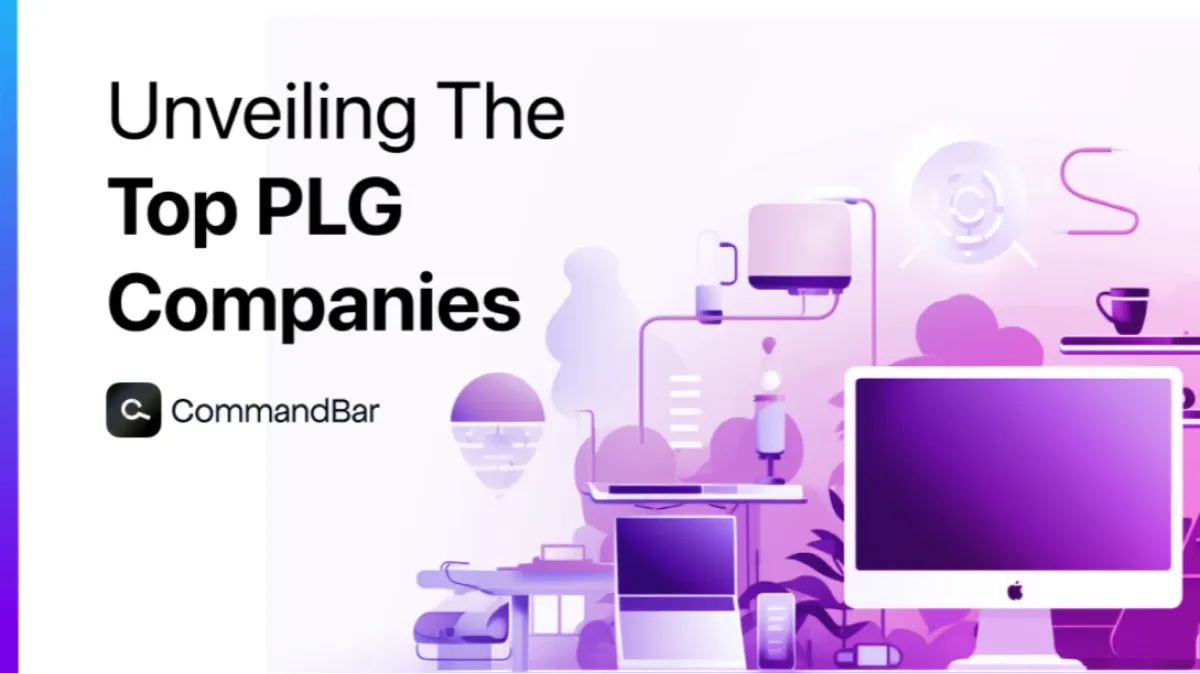
Everyone's talking about how great product-led growth is. But if you copy from random SaaS companies you find online, you might copy stuff that's NOT working. Just because someone shipped something to prod doesn't mean it's good. We dug in and found the top PLG companies to show you what makes them so great.
Want to improve your PLG onboarding? We've got a comprehensive PLG onboarding cheat sheet available for free, check it out!
But first, let's talk about the basics:
Product-Led Growth (PLG) is a transformative business strategy that champions the product as its main hero. Unlike traditional methods, it emphasizes the product as the primary catalyst for customer acquisition and retention.
Differing significantly from sales-led models, PLG firmly places the product as the nucleus of business growth, diminishing the previously overwhelming reliance on expansive sales teams.
By fostering a seamless collaboration across various departments, from astute engineering to insightful marketing, PLG empowers businesses to offer unparalleled, unique, and meticulously tailored product experiences, ensuring enduring customer loyalty and satisfaction.
This in-depth piece dives deep into the accomplishments and innovative strategies of top PLG companies, highlighting and spotlighting eight exemplary SaaS companies that masterfully embody the essence of the product-led growth strategy.
By recognizing and unraveling the common threads woven into their notable successes, this exploration also unfurls a vivid tapestry showcasing future trends and forward-thinking predictions in the PLG domain.
So dive, and discover how embracing PLG can serve as your robust linchpin for sustained growth, ensuring unparalleled customer retention and success in the dynamic and ever-evolving digital epoch.
Laying the groundwork: Understanding the power of PLG

Product led growth strategies marry product value with business growth. As we dissect the intricate weave of PLG, it's vital to understand its pillars, the guiding lights for enterprises aiming to soar in this vibrant domain.
The pillars of product-led growth (PLG)
These pillars are the backbone principles that set the direction for how a product-led growth company should align product development and market expansion, ensuring a perfect sync between user desires and business outcomes.
Design with end-user in mind
Products that truly stand out strike a deep chord with their users. To resonate, it’s crucial to fathom user desires and mold a solution in an intuitive product format. Moreover, the product must also empower users, making them enthusiastic advocates in their network.
Deliver value before capturing it
For any product-led strategy, it's quintessential for users to comprehend its value even before diving into their pockets. This realization moment is central to converting free users into paying customers. Giants like SurveyMonkey and Grammarly not only ace the user experience game but also adeptly highlight the value in real time.
Invest in the product with GTM intent
A half-hearted embrace of the product-led growth model won’t suffice. Commitment to resources is essential to guarantee flawless product experiences, especially since, in PLG, organic recommendations or word-of-mouth play a pivotal role. Rushed launches or substandard experiences can stunt growth.
Accelerating PLG success
Having demystified the foundational pillars, let's pivot to strategies that can amplify your PLG strategy. This segment explores means to magnify product outreach, tackle the evergreen freemium vs. free trials debate, and fortify the self-serve ethos - crucial rungs in the PLG success ladder.
Spread the word

The magic of virality can turbocharge PLG outcomes. While tools like Zoom are inherently viral, platforms like Dropbox harness virality through strategic features. Exceptional customer experience can often become the unsung hero, transforming satisfied customers into brand evangelists.
The freemium debate
Freemium approaches have always been a hot topic. While data from OpenView suggests that freemium models excel in initial sign-ups, they lag in converting free users to paid compared to free trials. Yet, when you tally up costs and efficiency, freemium often takes the lead.
Empower customers to self-serve
PLG's essence lies in minimizing obstacles. By optimizing every user touchpoint, from registration to product usage, businesses can bolster adoption. It's a journey of continual introspection, spotting, and erasing hitches.
Why companies are banking on PLG
Having charted the core and accelerants of PLG, the real question emerges: Why is PLG the talk of the town in today's business world?
In this section, we'll unlock the tangible perks and strategic leverages persuading companies to adopt a product-led growth strategy - from slashing sales cycles to leveraging insights for refinements.
Shorter sales cycles
By widening the funnel and promoting self-onboarding, PLG shrinks the sales timeline, paving the way for faster conversions and scaling.
Cost efficiency
PLG champions the product, downplaying heavy-duty marketing and sales campaigns, thus slashing customer acquisition costs. The approach nurtures a nimble yet potent team, spotlighting roles that truly matter.
Maximized revenue
With the product in the driver's seat, team members can focus intensely on specific roles, optimizing the revenue per employee.
Optimal user experience
There's zero leeway for product-led companies to slip on user experience. A top-tier user journey is a ticket to loyalty, positive referrals, and an easier monetization route.
One of the best ways to do this is with cleaner and less annoying in-app messaging. Our customers have found increased engagement, higher response rates to surveys, better retention, and more once they used Command AI's smart targeting for their in-app messaging.

This allows for more "in-context" nudges and surveys that boost engagement and response rate.
Informed decisions with enhanced analytics
Armed with rich user engagement metrics, PLG companies can perpetually refine their offerings. This data-backed stance not only enriches user experience but also fosters innovations in sync with user expectations.
Top PLG examples: 8 SaaS companies that nailed product-led growth
Dive into the riveting tales of eight SaaS companies that are poster children for successful product-led growth.
Slack

Clocking a $7 billion valuation in a mere five years, Slack is a testament to the might of the freemium model combined with a top-notch user experience. The linchpin of its meteoric rise? A built-in viral mechanism where ecstatic users naturally turn into brand promoters. These power users amplify their impact when they ascend to paid plans, surging revenue.
Slack is a beacon in solving the email deluge dilemma. Branding itself as a "digital HQ," it's a linchpin for team unification from day one. A comprehensive tool, Slack integrates with favorites like Office and Google Docs, making document sharing and communication a breeze.
Scaling in tandem with team evolution and shifting business requirements, Slack offers enterprises indispensable features like enduring message logs. Offering value instantly while maintaining a user-friendly interface remains its ace.
Dropbox

Infusing virality into its DNA with a PLG touch, Dropbox has designed a unique user experience. Dropbox aficionados can share content with folks devoid of a Dropbox account. This seamless sharing nudges them towards the platform’s myriad benefits, often leading them down the registration path.
Dropbox’s referral blueprint supercharges its growth strategy. Luring users with perks like bonus storage for referrals, Dropbox not only amplifies user acquisition but also fortifies user allegiance.
Pair this with its user-focused design, and it's no wonder Dropbox breezed past the $1 billion revenue milestone in just ten years.
Calendly
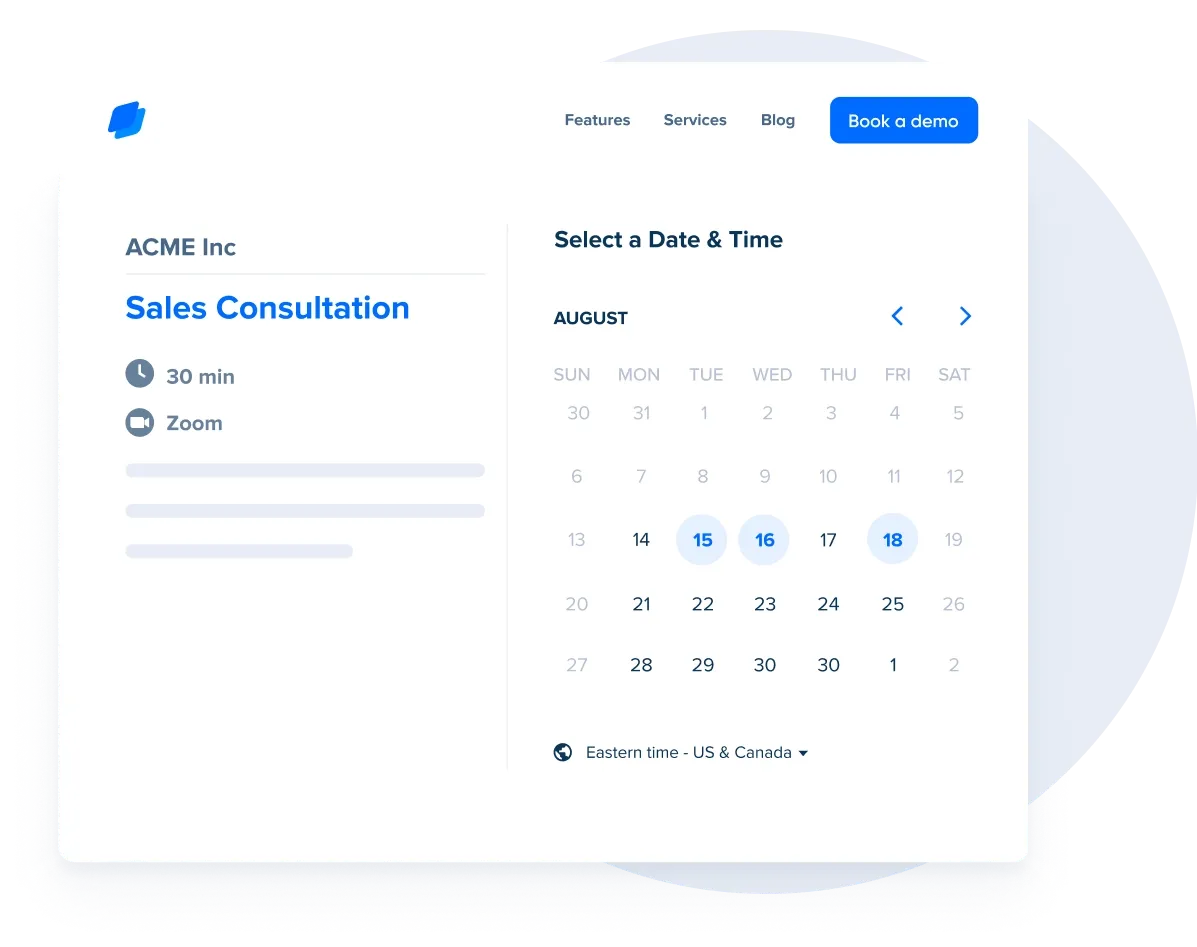
Leveraging an effective product-led growth (PLG) strategy, Calendly has firmly positioned itself within the scheduling market, boasting a $3 billion valuation with fewer than 250 users and generating over $100 million in revenue.
A central facet of their go-to-market strategy is a consistent K-factor, intrinsically linked to the volume of invitations sent out by users. Each of these invitations magnifies Calendly’s reach and offers a prime opportunity to showcase its robust scheduling solutions, creating a network effect that ensures exponential growth.
By providing users the capability to schedule meetings using a single event type without any charges, they’ve successfully pulled in a massive user base, thereby amplifying their visibility and solidifying their reputation as a leading scheduling platform.
DocuSign
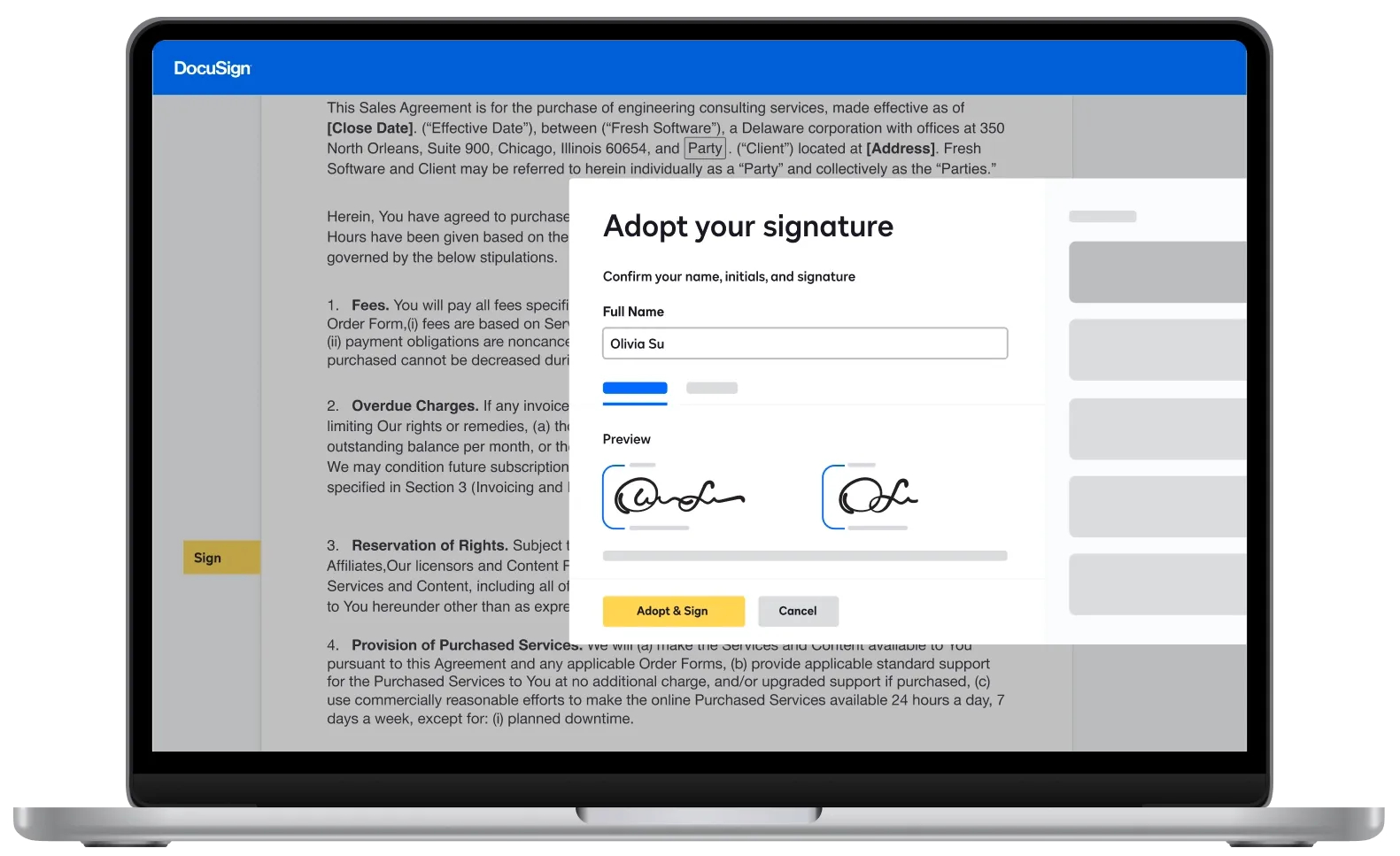
DocuSign, a revered name in the realm of digital signatures and document management, has revolutionized business workflows. Their product-led strategy focuses on offering a versatile tool that permits users to sign documents from anywhere. Their groundbreaking IPO in 2018, amassing a market capitalization of $6 billion, serves as an undeniable testament to their industry dominance.
The key to DocuSign's success is its dedication to universal accessibility combined with a user-centric approach. Designed for businesses of all sizes, its platform is remarkably intuitive, making the process of document signing and management straightforward.
It also doesn’t hurt that the freemium model is strategically deployed, giving new users a glimpse into its prowess and smoothing the path to its paid versions, encapsulating a seamless user experience. If you want to know who DocuSign competes with, check out the best DocuSign competitors here.
HubSpot

Anchoring HubSpot's commendable $17.56 billion valuation is its in-depth onboarding methodology paired with an expansive free plan. A cap on contact numbers in this free tier cleverly encourages users towards its premium offerings, ensuring loyalty and retention.
Initially steering towards sales, HubSpot underwent a transformation to embrace a product-led growth (PLG) strategy. Guided by their global director of sales, David Barron, they inaugurated a specialized internal division echoing the agility of a startup, primarily focusing on PLG tactics.
This dedicated unit, replete with product experts and specialized sales and customer service teams, charted HubSpot’s freemium trajectory. Over time, their innovative insights seamlessly integrated with HubSpot's overarching vision, guiding its journey toward the apex of product-led companies.
ClickUp

Launched in 2017, ClickUp swiftly carved its niche in the productivity arena, flaunting an astounding $4 billion valuation. Unlike its contemporaries, ClickUp’s go-to-market strategy favored a broad approach over a specialized one, amalgamating features of 10 distinct productivity tools into a singular platform.
Such a unified solution addresses a common problem: the constant need to switch between multiple specialized tools. With ClickUp, the essence of productivity tools, i.e., achieving efficiency, is genuinely realized.
Driving ClickUp's exponential growth is its staunch commitment to user feedback. Engaging with its 4-million-strong user community through forums and social media, it ensures product evolution aligns with user needs.
Their product-led strategy isn’t heavily anchored in traditional sales. Instead, they prioritize referral programs, incentivizing sign-ups, premium plan migrations, and optimizing acquisition costs.
Figma
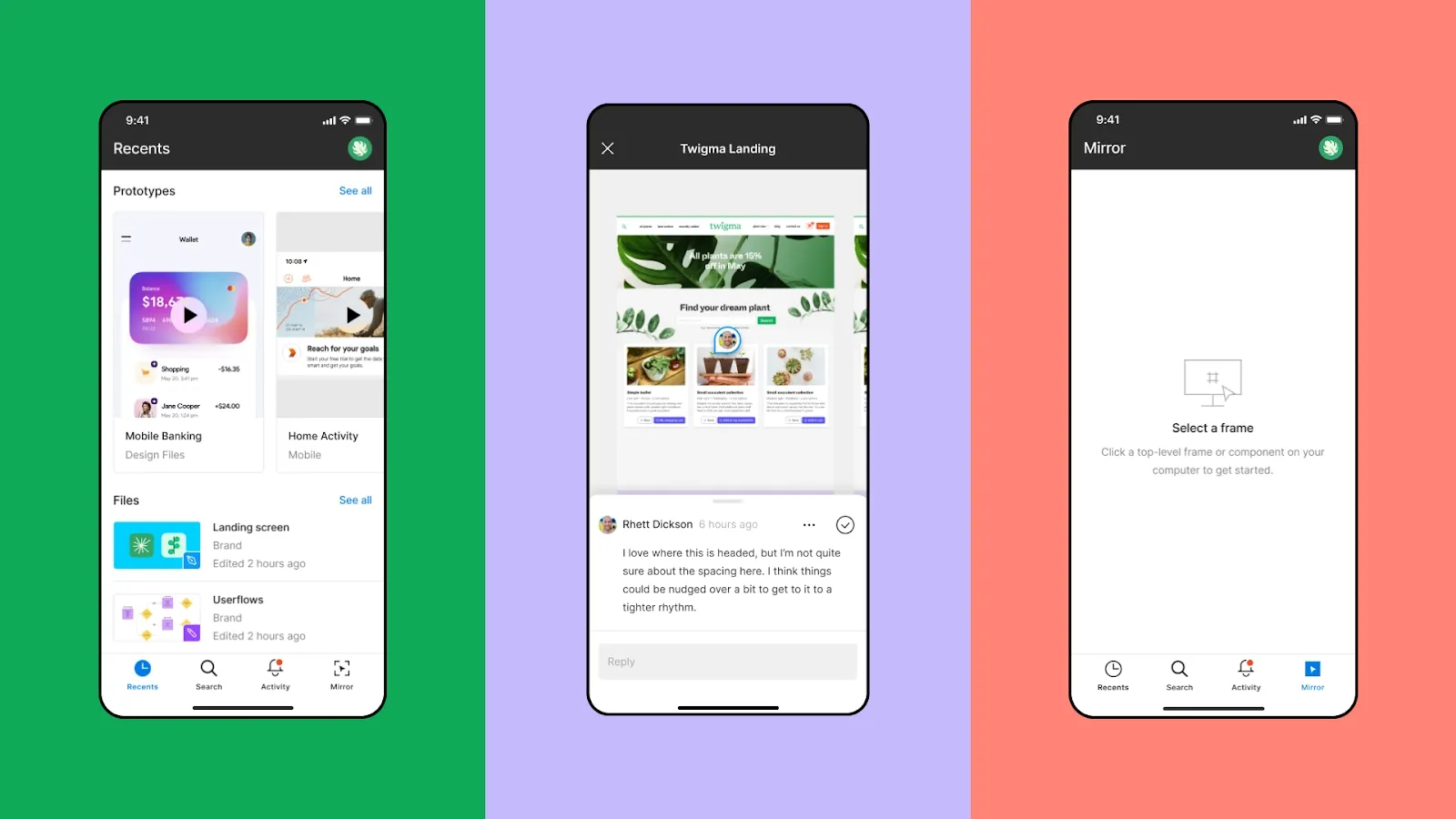
In a decade, Figma redefined the design landscape, compelling industry giant Adobe to seal a $20 billion acquisition. Figma’s PLG strategy astutely aimed at the lower end of the design market, including soloists and students, granting them complimentary platform access.
As these users matured professionally, their early affinity for Figma ensured its introduction into more established settings. This grassroots approach, catering initially to novices while envisioning long-term growth, remains integral to Figma's success.
Vercel

In the realm of companies mastering product growth, Vercel stands tall. Recently securing a staggering $150M in Series D financing, this company's influence in the PLG landscape is undeniable.
The cornerstone of Vercel's acclaim is Next.js, an industry-leading frontend framework boasting over 77,000 GitHub stars and a remarkable 8 million NPM downloads in just the past year.
Founder Guillermo Rauch's strategic foresight bridges the gap between static and dynamic application development. With Vercel, developers get an optimized platform that accompanies them from ideation to deployment.
The current digital metamorphosis positions Vercel advantageously. A consistent surge in their network traffic and a notable presence in Alexa rankings reflect their market dominance. Their impressive NPS scores reaffirm the trust and endorsement of the developer community.
GGV Capital's reinforcement of its commitment to Vercel is a testament to the company's growth potential. With a developer-centric approach and an effective PLG strategy, Vercel's trajectory is poised for further ascent in the tech panorama.
Key characteristics of flourishing PLG companies
When dissecting the success of PLG companies, certain patterns and shared traits become evident. These commonalities are a beacon for other organizations hoping to integrate PLG into their strategy:
Immediate, out-of-the-box value
PLG giants waste no time in showcasing their worth. From the moment a user interacts with the product, its value proposition is clear and compelling.
There's minimal need for complicated setups or tedious tutorials.
You can use a product tour to maximize their first few minutes and get them to an "Aha" moment quickly.
For example, in this product tour you get a quick introduction to the purpose and value of each of our tools. That means after you finish the tour in 30 seconds you are at least familiar with each feature, and are ready to go explore more.
Product tours can be helpful tools to keep folks on track
Users are greeted with an intuitive interface, and within moments, they grasp the tangible benefits that the product promises.
Scalability at its core
One of the most captivating features of successful PLG companies is their intrinsic ability to scale. Whether it’s about accommodating an influx of new users or introducing innovative features, these businesses can quickly pivot and adapt. Furthermore, their platforms allow users to seamlessly transition between different usage tiers, ensuring that the product grows alongside their evolving needs.
Leveraging the power of advocacy
Word-of-mouth remains one of the most potent marketing tools, and PLG companies masterfully harness its potential. Users, impressed by the efficacy and reliability of the product, naturally become ambassadors. They share their positive experiences within their networks, leading to organic growth that's both sustainable and cost-effective.
Unwavering focus on the user
While technology and innovation are crucial, PLG companies understand that at the heart of every product lies the user. Their strategies are intertwined with customer-centricity. Comprehensive onboarding processes, responsive support teams, and a commitment to user feedback ensure that these businesses remain relevant and revered.
This commitment extends beyond UI and into support and user assistance. One powerful way to do this is through an AI agent, which can help users get quick answers, guide them through the product and more.
One of the things our customers have been most excited about is how our Copilot can not only answer questions and text but actually launch in product experiences to directly answer questions.
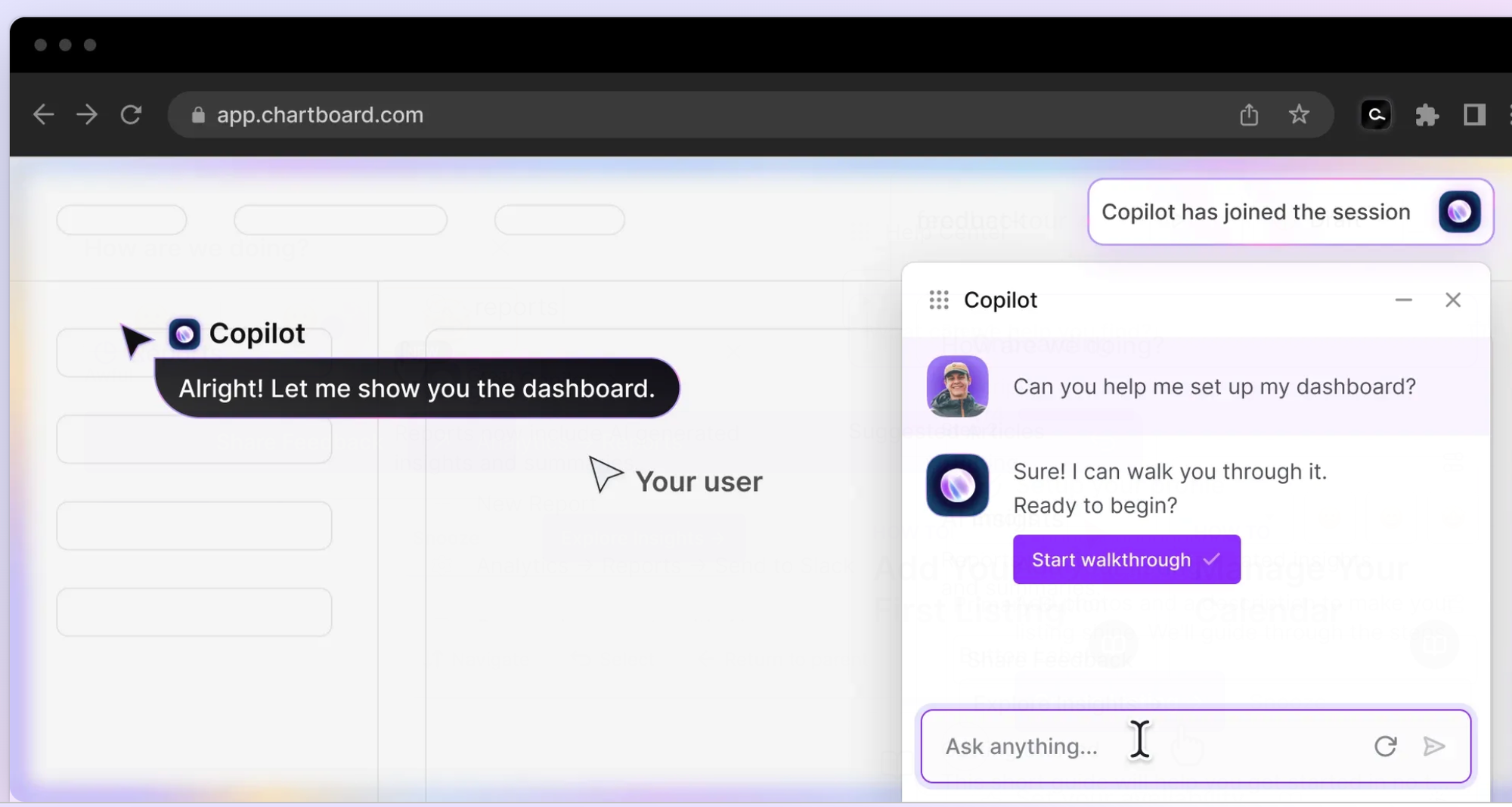
This is both a "wow" moment for users AND better way to solve certain problems than through text.
Trends and predictions in PLG
The ever-adapting landscape of PLG, inspired by the trailblazing endeavors of its frontrunners, beckons an exciting future:
Hyper-personalization takes center stage

The future PLG terrain will see an intensified focus on tailor-made user experiences. Leveraging AI and machine learning, companies will offer solutions that are uniquely molded to individual user preferences, thus ensuring heightened engagement and loyalty.
Omnipresence through omnichannel strategies
Consistent user experiences across various touchpoints will become paramount. PLG companies will integrate analytics, ensuring uniform messaging and value delivery across all user interactions, be it on a mobile app, a desktop, or even offline.
Immersive experiences with AR and VR
Augmented and Virtual Reality will redefine user interactions in PLG. These technologies will offer lifelike product demonstrations and interactive user interfaces, deepening user engagement and revolutionizing onboarding processes.
Empowered communities drive growth

The role of user communities in shaping product trajectories will become even more pronounced. Peer interactions, user-generated videos, and transparent feedback mechanisms will not only drive product enhancements but also fortify user trust.
Voice-first product interactions
With the growing prevalence of voice assistants, voice-driven product experiences will become the norm. This will simplify user interactions, making onboarding processes even more seamless.
Aligning purpose with product
More PLG companies will intertwine their brand ethos with global causes and sustainability, resonating with a growing demographic of socially-conscious users.
Guardians of data privacy

As data becomes the new gold, PLG companies will place an intensified focus on transparent data practices. User trust will be paramount, and companies will ensure that data collection and utilization remain consensual and protected.
Evolution is continuous
The future PLG landscape will be marked by incessant product iterations. Agile methodologies, bolstered by real-time user feedback, will guide product enhancements, ensuring that offerings remain relevant in an ever-changing digital environment.
The ultimate combination of a customer-centric and socially-driven approach.

Diving deep into the realm of Product-Led Growth (PLG), it becomes evident how placing the product at the heart of customer acquisition, activation, and retention transforms businesses.
Leaders in the PLG space, like Slack, Notion, and Zoom, aren’t just product-led companies — they're pioneers. They've seamlessly blended exceptional customer experiences with powerful viral loops, all while building vibrant user communities. Their sales team and customer success teams work hand-in-hand to ensure users get the most from their offerings. They know that being a product-led sales company is an advantage, but that PLG is the ultimate level.
The horizon of PLG teems with exciting innovations. Think hyper-personalization, purpose-driven initiatives, or even augmented reality experiences becoming part of the PLG strategy. As businesses adapt and evolve, these trends can catapult them to new heights in an ever-shifting digital arena.
So, why not infuse your business approach with the product-led growth model? Prioritize crafting products that deliver instant value. Champion organic growth via word-of-mouth. And remember, always stay attuned to user feedback. By embedding these principles, you’ll not only harness the essence of PLG but also pave the way for a flourishing future.
